Abstract
1 The interaction of hydralazine (Hyd) and propildazine (Pyd) with purine compounds was studied in the isolated tail artery from normotensive Wistar (NW) rats.
2 Exogenously added purines inhibit non competitively the antispasmogenic response to Hyd in denervated NW segments. The order of potency is 2-Cl-adenosine > adenosine > adenosine 5′-triphosphate (ATP) > inosine. Pyd action is modified only by the most active purine 2-Cl-adenosine, which displaces the dose-response curves to the right. Hyd and Pyd seem to act on the same site, since their maximal effects are not additive.
3 Theophylline (Theo) 50 μM induces the appearance of the antispasmogenic effect of Hyd in the usually poorly responsive innervated proximal NW arterial segments. The potentiating action of Theo is identical to the enhancement of the Hyd response observed after 6-hydroxydopamine denervation. This result suggests that the release of endogenous purines from sympathetic nerves is sufficient to block the smooth muscle responses to Hyd, under our experimental conditions. A similar potentiating effect is obtained with propranolol (5 μM).
4 The spontaneous release of 3H, after loading with [3H]-noradrenaline, was considered as an indirect indication of purine leakage from nerve terminals. There is an inverse relationship between the rate of 3H release, under these conditions, and the magnitude of the relaxant response to Hyd, i.e., 3H leakage is higher in proximal NW segments.
5 The most satisfactory explanation for the interaction of Hyd and Pyd with exogenous purines, and for the modulating actions of sympathetic nerve terminals, is that both antihypertensives act on a common receptor, sensitive to endogenous ATP and adenosine.
Full text
PDF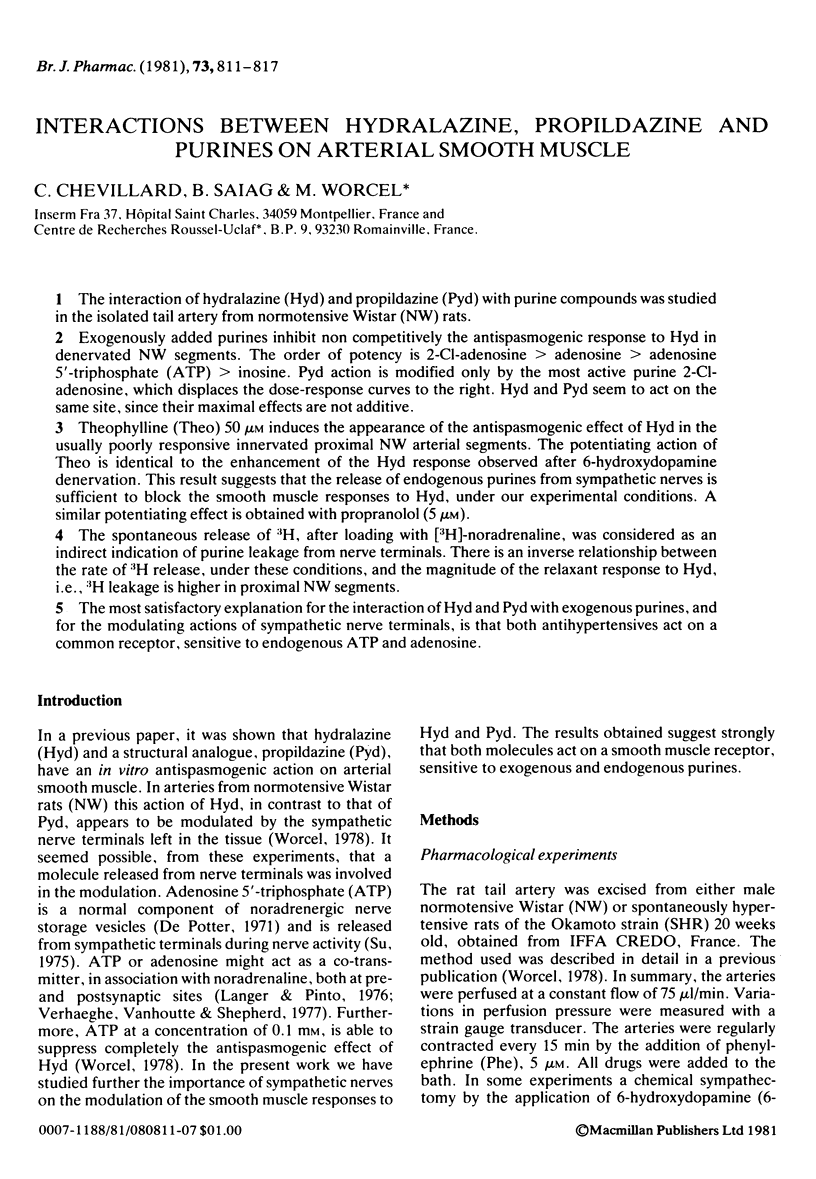
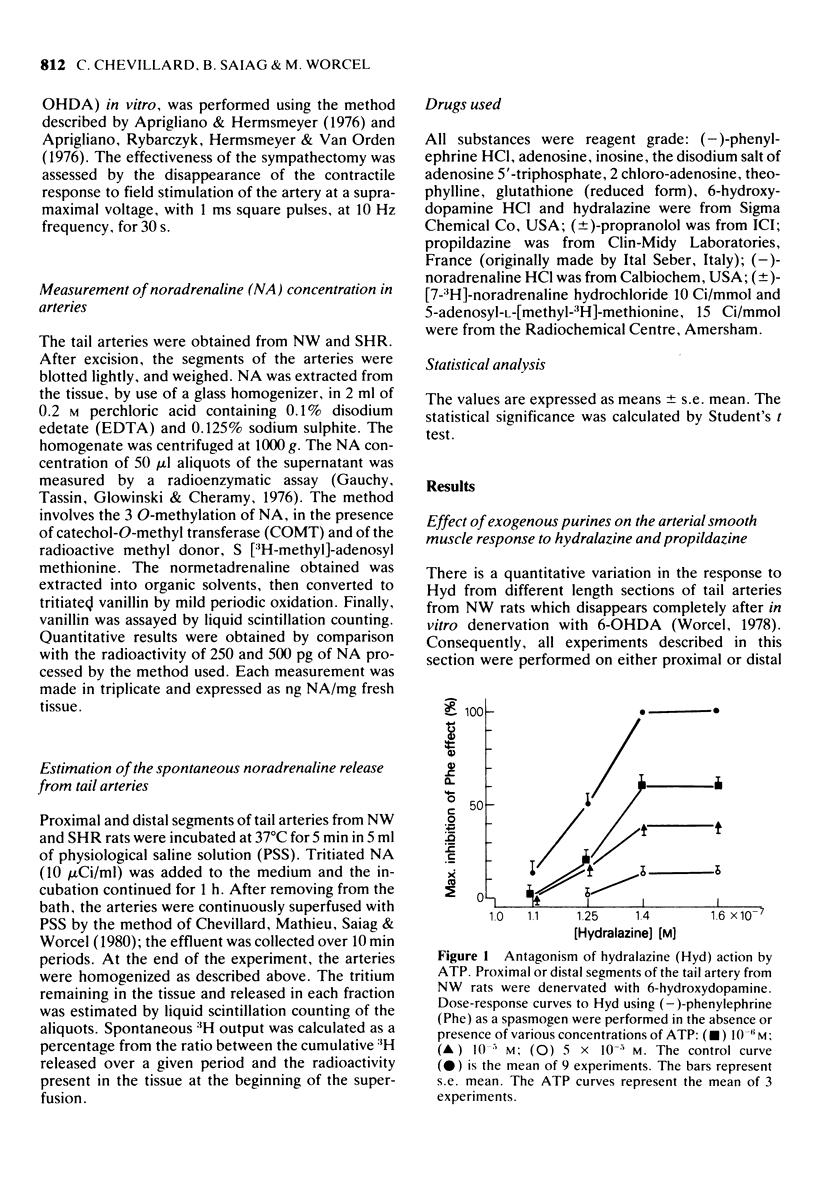
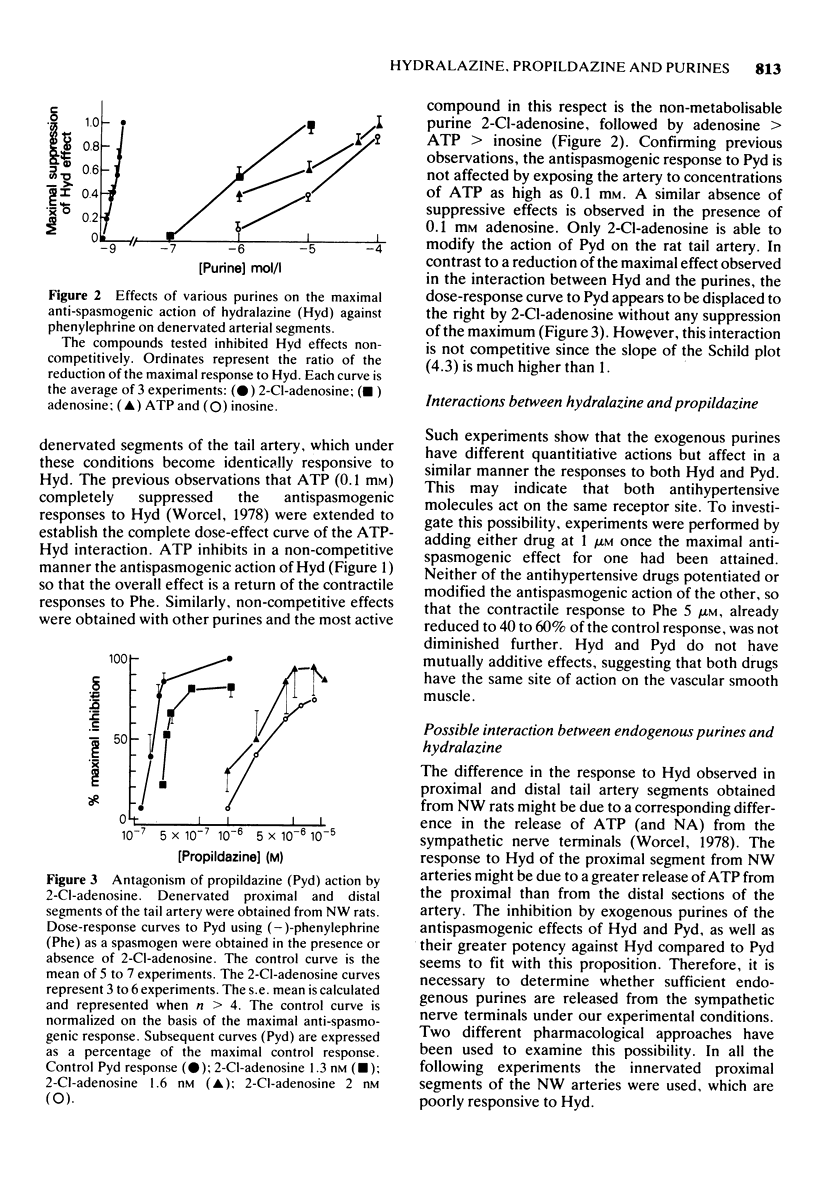
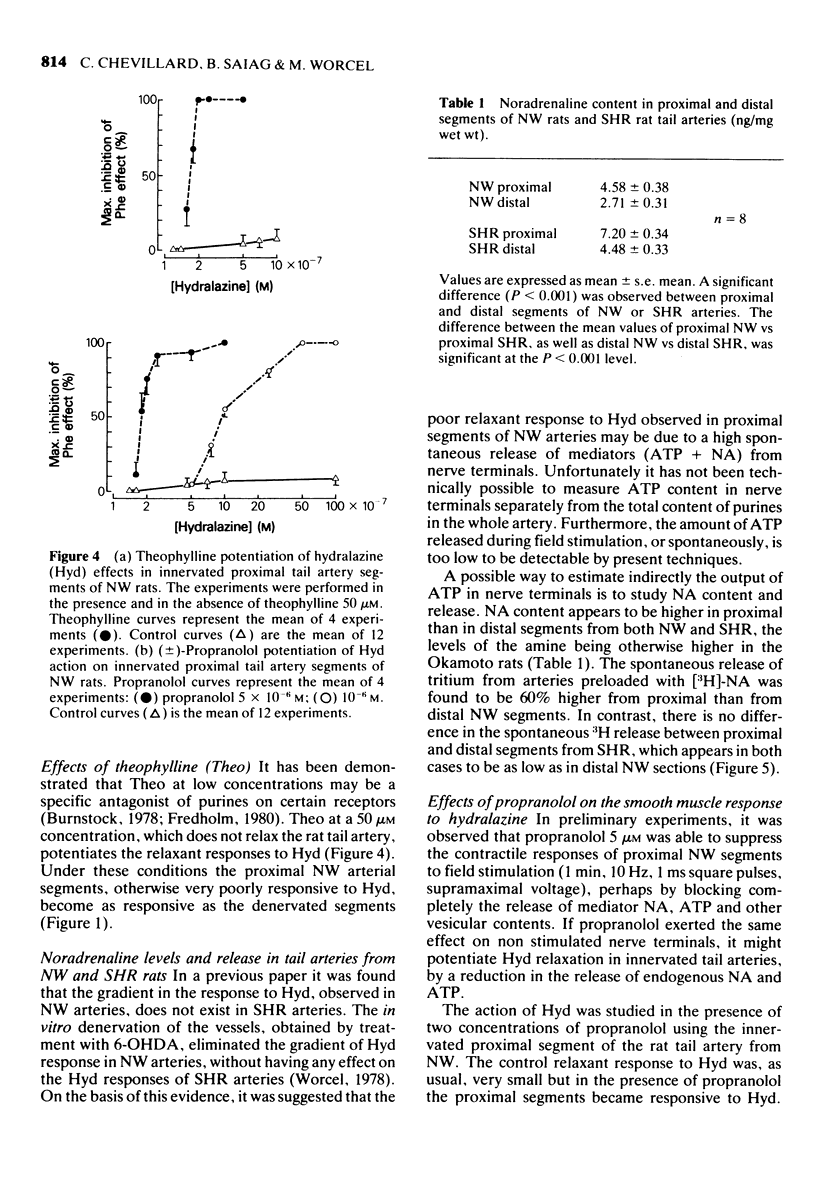
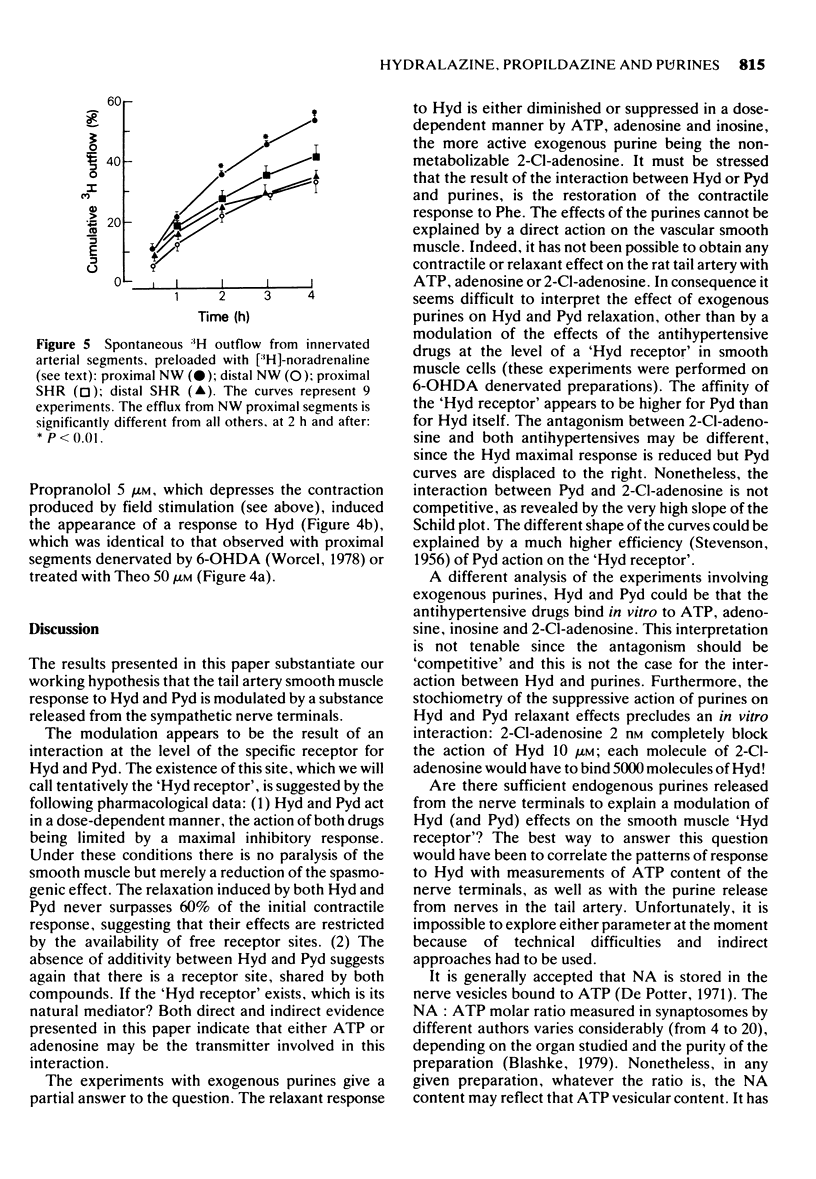
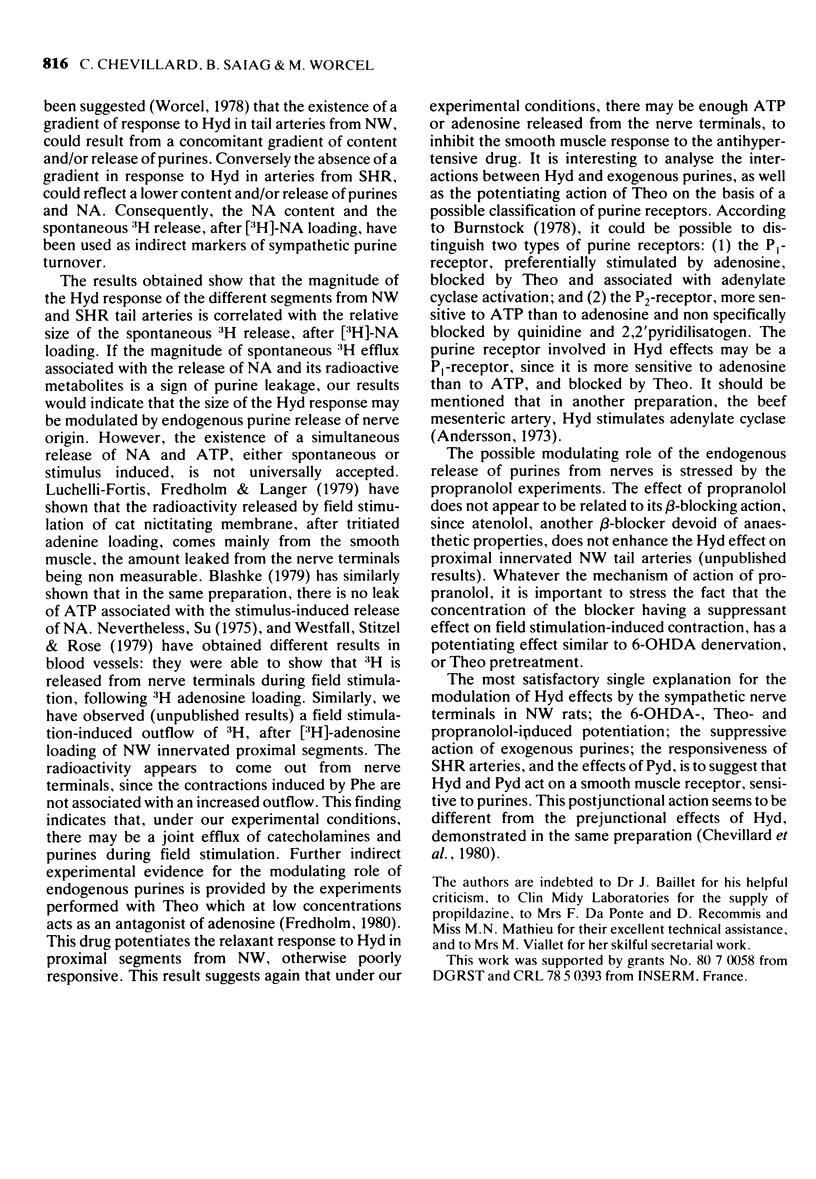
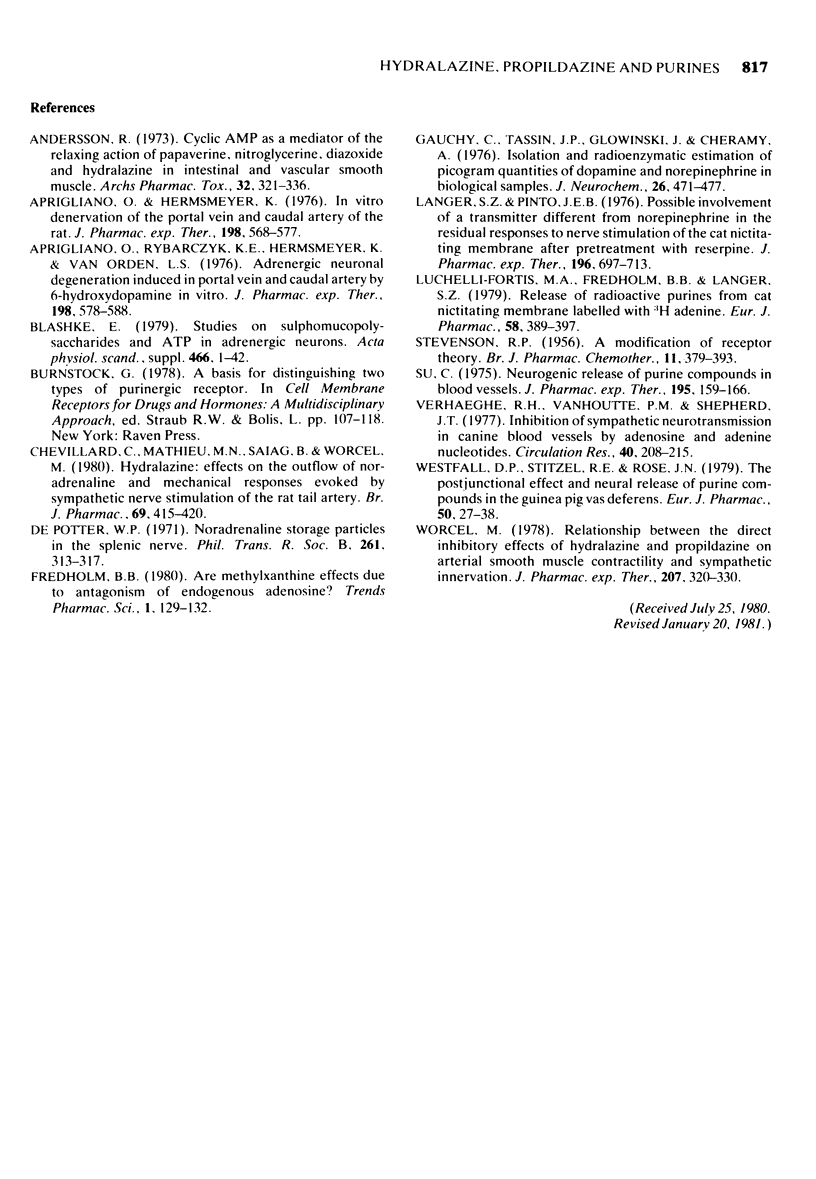
Selected References
These references are in PubMed. This may not be the complete list of references from this article.
- Andersson R. Cyclic AMP as a mediator of the relaxing action of papaverine, nitroglycerine, diazoxide and hydralazine in intestinal and vascular smooth muscle. Acta Pharmacol Toxicol (Copenh) 1973;32(5):321–336. [PubMed] [Google Scholar]
- Aprigliano O., Hermsmeyer K. In vitro denervation of the portal vein and caudal artery of the rat. J Pharmacol Exp Ther. 1976 Sep;198(3):568–577. [PubMed] [Google Scholar]
- Aprigliano O., Rybarczyk K. E., Hermsmeyer K., Van Orden L. S. Adrenergic neuronal degeneration induced in portal vein and caudal artery by 6-hydroxydopamine in vitro. J Pharmacol Exp Ther. 1976 Sep;198(3):578–588. [PubMed] [Google Scholar]
- Chevillard C., Mathieu M. N., Saiag B., Worcel M. Hydralazine: effect on the outflow of noradrenaline and mechanical responses evoked by sympathetic nerve stimulation of the rat tail artery. Br J Pharmacol. 1980 Jul;69(3):415–420. doi: 10.1111/j.1476-5381.1980.tb07030.x. [DOI] [PMC free article] [PubMed] [Google Scholar]
- De Potter W. P. Noradrenaline storage particles in splenic nerve. Philos Trans R Soc Lond B Biol Sci. 1971 Jun 17;261(839):313–317. doi: 10.1098/rstb.1971.0062. [DOI] [PubMed] [Google Scholar]
- Gauchy C., Tassin J. P., Glowinski J., Cheramy A. Isolation and radioenzymic estimation of picogram quantities of dopamine and norepinephrine in biological samples. J Neurochem. 1976 Mar;26(3):471–480. doi: 10.1111/j.1471-4159.1976.tb01498.x. [DOI] [PubMed] [Google Scholar]
- Langer S. Z., Pinto J. E. Possible involvement of a transmitter different from norepinephrine in the residual responses to nerve stimulation of the cat nictitating membrane after pretreatment with reserpine. J Pharmacol Exp Ther. 1976 Mar;196(3):697–713. [PubMed] [Google Scholar]
- Luchelli-Fortis M. A., Fredholm B. B., Langer S. Z. Release of radioactive purines from cat nictitating membrane labeled with 3H-adenine. Eur J Pharmacol. 1979 Oct 15;58(4):389–397. doi: 10.1016/0014-2999(79)90309-1. [DOI] [PubMed] [Google Scholar]
- Su C. Neurogenic release of purine compounds in blood vessels. J Pharmacol Exp Ther. 1975 Oct;195(1):159–166. [PubMed] [Google Scholar]
- Verhaeghe R. H., Vanhoutte P. M., Shepherd J. T. Inhibition of sympathetic neurotransmission in canine blood vessels by adenosine and adenine nucleotides. Circ Res. 1977 Feb;40(2):208–215. doi: 10.1161/01.res.40.2.208. [DOI] [PubMed] [Google Scholar]
- Westfall D. P., Stitzel R. E., Rowe J. N. The postjunctional effects and neural release of purine compounds in the guinea-pig vas deferens. Eur J Pharmacol. 1978 Jul 1;50(1):27–38. doi: 10.1016/0014-2999(78)90250-9. [DOI] [PubMed] [Google Scholar]
- Worcel M. Relationship between the direct inhibitory effect of hydralazine and propildazine on arterial smooth muscle contractility and sympathetic innervation. J Pharmacol Exp Ther. 1978 Nov;207(2):320–330. [PubMed] [Google Scholar]


